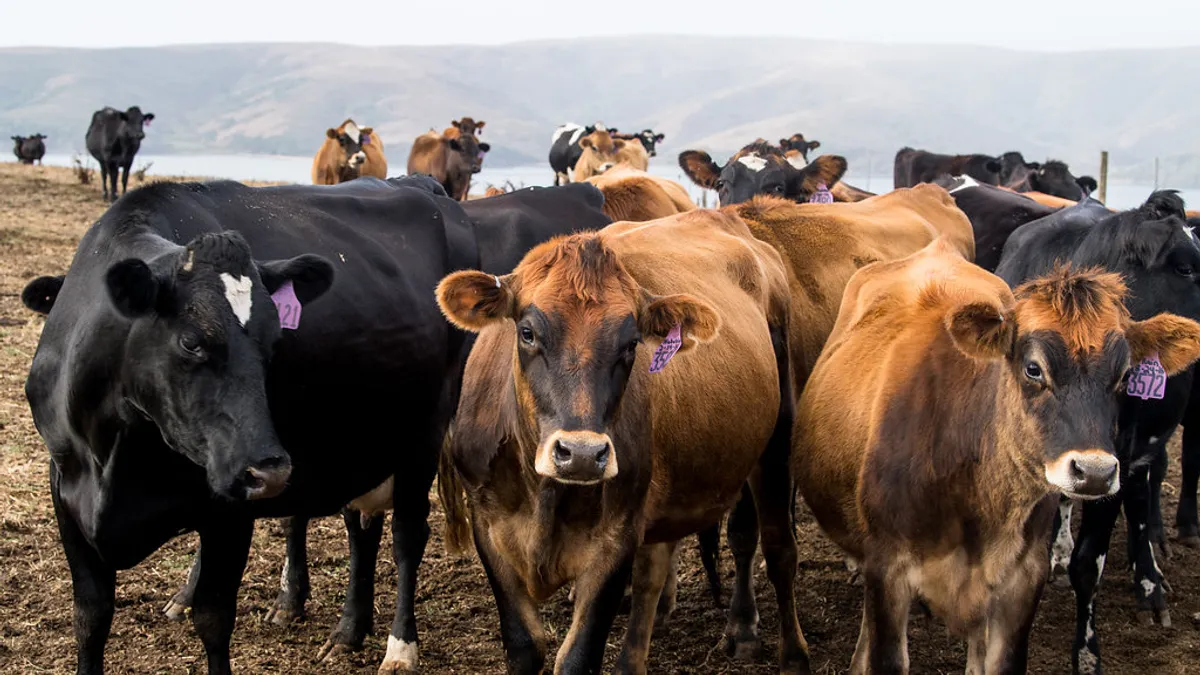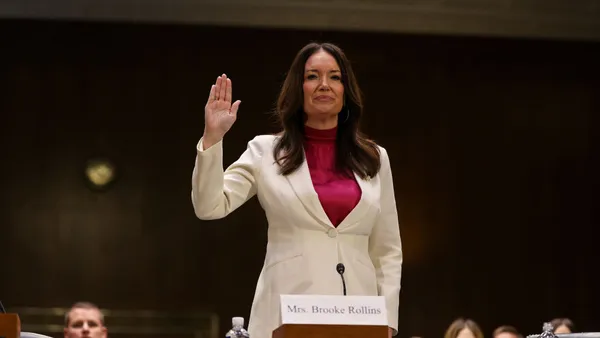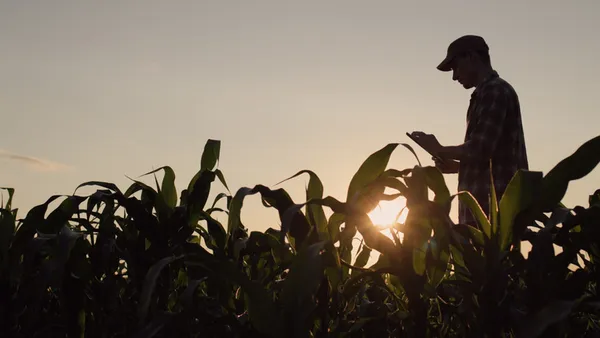Dive Brief:
-
The Agriculture Department is offering U.S. dairy farmers more financial incentives to stop the spread of bird flu among livestock, including payments for producers to implement biosecurity plans even if their cow herds have not tested positive for the H5N1 virus.
-
The USDA said Thursday it will provide up to $1,500 per premises to any farmer that develops and implements an enhanced biosecurity plan based on existing secure milk supply plans. The department will additionally provide a $100 payment for producers that purchase an in-line milk sampler.
-
Farmers are also eligible for up to $2,000 per premises for veterinary costs associated with collecting milk samples for bird flu testing. The USDA will reimburse the cost of shipping test samples with some restrictions.
Dive Insight:
Earlier this month, the USDA and Department of Health and Human Services announced a $200 million plan to step up bird flu testing and enhance biosecurity measures for farms impacted by the virus. Each affected dairy location is eligible for up to $28,000 through September for various costs and incentives as part of the plan.
After receiving feedback from state partners and agriculture stakeholders, the USDA expanded its funding to include producers whose herds have not tested positive for bird flu to further reduce the risk of the virus spreading.
While cows have largely recovered after contracting H5N1, the disease can result in major declines in milk production. To help offset those losses, the USDA is working on a rule that would offer payments valued at 90% of lost milk production per cow.
Funding would be made available from the Emergency Assistance for Livestock, Honey Bees and Farm-raised Fish Program, and the milk loss payments would be retroactive to March, when the first confirmed positive herd was identified. More than 52 detections in cattle across nine states have been confirmed as of May 23.
The USDA is stepping up its efforts after a second farm worker tested positive for bird flu. Farm workers are at greater risk of infection than the general public and should adhere to recommended biosecurity measures and wear personal protective equipment, according to the Centers for Disease Control and Prevention.











